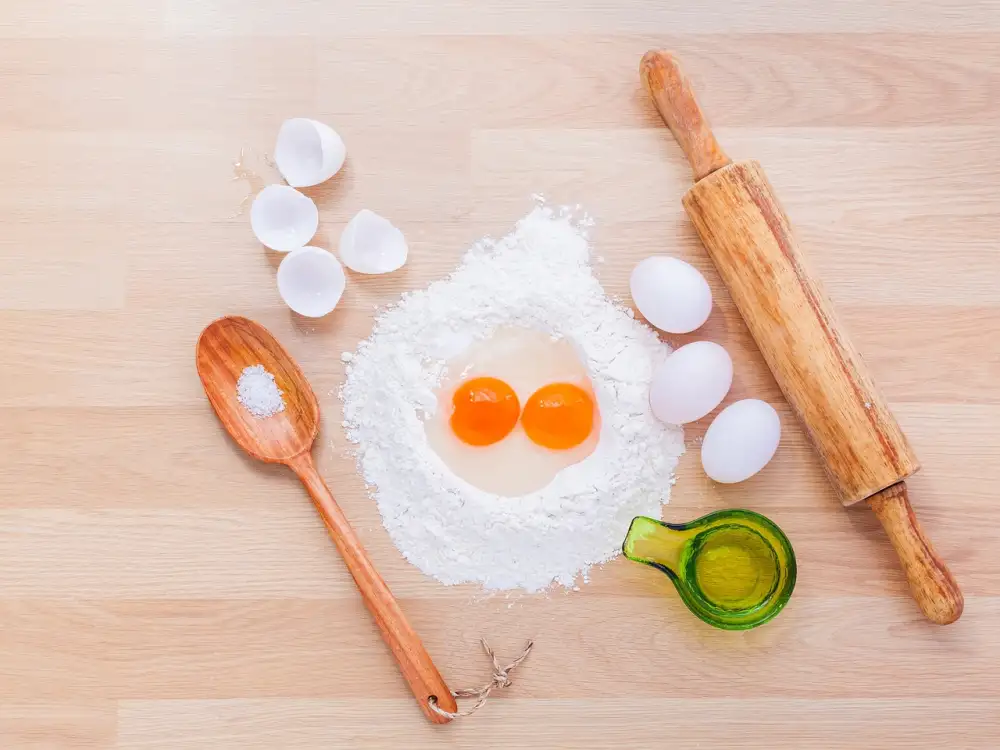Bordelaise: Unveiling the Secrets of the French Wine-infused Sauce

- Origins and history of bordelaise sauce
- Key ingredients of bordelaise sauce
- The process of making bordelaise sauce
- Variations and adaptations of bordelaise sauce
- Culinary uses and pairings with bordelaise sauce
- Tips and tricks for perfecting bordelaise sauce
- Health benefits and nutritional value of bordelaise sauce
Bordelaise sauce, a classic French creation, is a rich and flavorful sauce that has been tantalizing taste buds for centuries. This velvety sauce is known for its deep red color and robust taste, making it a favorite among food enthusiasts around the world. With its origins rooted in Bordeaux, France, bordelaise sauce has become a staple in French cuisine and is now celebrated globally for its exquisite flavors and versatility. Join us on a culinary journey as we unveil the secrets of bordelaise sauce and discover why it continues to be a trailblazer in the world of innovative food creations.
Origins and history of bordelaise sauce
Origins and history of bordelaise sauce:
Bordelaise sauce, a classic French sauce known for its rich flavor and wine-infused base, has a fascinating history that dates back to the 19th century. Its name is derived from the Bordeaux region in southwestern France, famous for its world-renowned wines.
Legend has it that bordelaise sauce was created by a chef named Jean-Pierre Xiradakis in the mid-19th century. Inspired by the flavors of Bordeaux wine, he sought to create a sauce that would complement the region's exquisite cuisine.
Traditionally, bordelaise sauce was made by reducing red wine from Bordeaux with shallots, garlic, and herbs. This reduction was then combined with beef or veal stock and simmered until it reached a velvety consistency. The resulting sauce boasted a deep, complex flavor profile with hints of wine and aromatic herbs.
Over time, variations of bordelaise sauce emerged. Some chefs added butter to enhance its richness, while others incorporated additional ingredients like mushrooms or demi-glace for added depth. These adaptations allowed for greater versatility in culinary applications.
Today, bordelaise sauce is not only enjoyed in traditional French cuisine but has also found its way into international dishes. Its robust flavor pairs well with grilled meats such as steak or lamb chops and adds an elegant touch to roasted vegetables or even pasta dishes.
The origins and evolution of bordelaise sauce reflect the rich culinary heritage of France and its commitment to creating sauces that elevate dishes to new heights. As we delve deeper into the secrets of this iconic sauce, we uncover not only its historical significance but also its enduring appeal in modern gastronomy.
Key ingredients of bordelaise sauce
Key ingredients of bordelaise sauce:
The key ingredients that give bordelaise sauce its distinct flavor are red wine, shallots, and beef or veal stock. The red wine used in the sauce is typically a Bordeaux wine, which is known for its rich and robust flavor. Shallots, with their delicate onion-like taste, add depth and complexity to the sauce. Beef or veal stock provides a savory base and enhances the meaty flavors of the sauce. Other essential ingredients include butter, garlic, thyme, and bay leaf, which contribute to the overall aroma and taste of this classic French sauce.
The process of making bordelaise sauce
The process of making bordelaise sauce begins by sautéing finely chopped shallots in butter until they become translucent. Red wine, typically a Bordeaux blend, is then added to the pan and simmered until it reduces by half. Next, beef or veal stock is incorporated into the mixture and allowed to simmer for about 30 minutes to develop rich flavors. The sauce is then strained to remove any solids and returned to the heat. Finally, a knob of butter is whisked into the sauce until it melts, giving it a velvety texture. The result is a luscious and flavorful sauce that perfectly complements a variety of dishes.
Variations and adaptations of bordelaise sauce
Variations and adaptations of bordelaise sauce have emerged over the years, allowing chefs to put their own unique spin on this classic French creation. One popular variation is the addition of shallots or onions, which adds a subtle sweetness to the sauce. Some chefs also experiment with different types of wine, such as Cabernet Sauvignon or Merlot, to create a richer and more complex flavor profile. Another adaptation involves incorporating herbs like thyme or rosemary for an aromatic twist. Additionally, some chefs choose to add beef or veal stock to enhance the depth of flavor. These variations ensure that bordelaise sauce can be tailored to suit various dishes and personal preferences, making it a versatile and adaptable culinary delight.
Culinary uses and pairings with bordelaise sauce
Culinary uses and pairings with bordelaise sauce:
Bordelaise sauce is a versatile condiment that adds depth and richness to a variety of dishes. Its robust flavor profile makes it an ideal accompaniment for grilled or roasted meats, such as steak, lamb, or pork. The velvety texture and savory notes of the sauce enhance the natural flavors of the meat, creating a harmonious combination.
Additionally, bordelaise sauce can be used to elevate other dishes like poultry or game meats. It can also be drizzled over vegetables, such as roasted potatoes or grilled asparagus, to add a luxurious touch.
For seafood lovers, bordelaise sauce can be a delightful pairing with fish or shellfish. The wine-infused sauce complements the delicate flavors of seafood without overpowering them.
When it comes to serving bordelaise sauce, it is best to pour it generously over the main dish or serve it on the side for dipping. The rich flavors of the sauce will enhance the overall dining experience and leave your taste buds craving for more.
Pairing suggestions include a full-bodied red wine like Bordeaux itself or a Cabernet Sauvignon to complement the flavors in the sauce. For those who prefer white wine, a buttery Chardonnay can also work well.
In conclusion, bordelaise sauce is a versatile condiment that enhances various dishes with its rich flavor and velvety texture. Whether paired with grilled meats, seafood, or vegetables, this French classic is sure to impress your guests and elevate any meal to new heights of culinary delight.
Tips and tricks for perfecting bordelaise sauce
Tips and tricks for perfecting bordelaise sauce:
1. Use a good quality red wine: Choose a full-bodied red wine, such as Bordeaux or Cabernet Sauvignon, to enhance the flavor of the sauce.
2. Reduce the wine properly: Simmer the wine until it reduces by half to concentrate its flavors and remove any harsh alcohol taste.
3. Sauté the shallots well: Take your time to sauté the shallots until they are soft and translucent, as this will add depth of flavor to the sauce.
4. Strain the sauce: After simmering, strain the sauce through a fine-mesh sieve to remove any solids and achieve a smooth texture.
5. Incorporate butter at the end: Add cold butter gradually while whisking constantly to create a rich and velvety texture in the sauce.
6. Season carefully: Taste and adjust the seasoning with salt and pepper sparingly, as you don't want to overpower the delicate flavors of the wine and shallots.
7. Let it rest before serving: Allow the bordelaise sauce to rest for a few minutes before serving to allow all the flavors to meld together.
By following these tips, you can perfect your bordelaise sauce and elevate your dishes with its rich, savory flavors.
Health benefits and nutritional value of bordelaise sauce
Bordelaise sauce, with its rich flavors and wine-infused base, not only enhances the taste of dishes but also offers some health benefits. The key ingredients of bordelaise sauce, such as red wine and garlic, contain antioxidants that help fight inflammation and protect against certain diseases. Additionally, the sauce is low in calories and fat, making it a healthier option compared to other heavy sauces. However, moderation is key as the sauce does contain sodium. Incorporating bordelaise sauce into your meals can add depth of flavor while providing some nutritional value.
In conclusion, bordelaise sauce is a true culinary gem that adds depth and sophistication to any dish. Its origins in Bordeaux, France, and its long history make it a sauce steeped in tradition and elegance. The combination of red wine, shallots, and bone marrow creates a rich and velvety texture with a complex flavor profile.
Whether used as a topping for steak or as a base for other dishes, bordelaise sauce elevates the taste experience to new heights. Its versatility allows for endless culinary creations, from classic French cuisine to modern interpretations.
Perfecting bordelaise sauce requires patience and attention to detail, but the end result is well worth the effort. Pair it with bold flavors like beef or game meats to enhance their natural taste. Experiment with different variations and adaptations to discover your own unique twist on this timeless sauce.
Not only does bordelaise sauce tantalize the taste buds, but it also offers health benefits. Red wine contains antioxidants that promote heart health, while shallots provide essential vitamins and minerals. However, moderation is key due to its high calorie content.
In conclusion, exploring the rich flavors of bordelaise sauce is an adventure in itself. So why not embark on this culinary journey and savor the exquisite taste of this French wine-infused delight? Let your taste buds be your guide as you discover the magic of bordelaise sauce in your own kitchen.
Published: 16. 11. 2023
Category: Food



